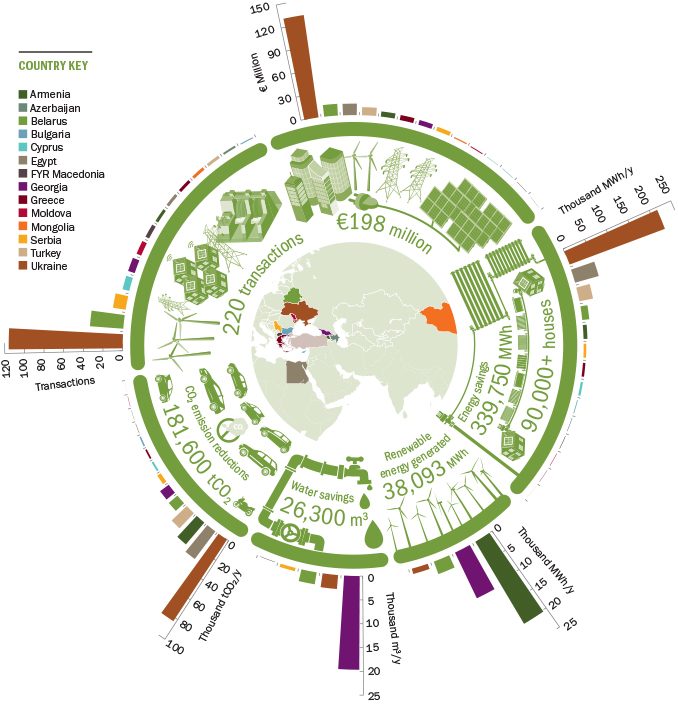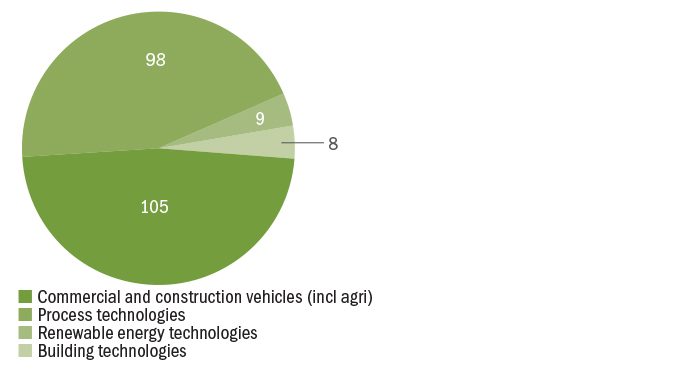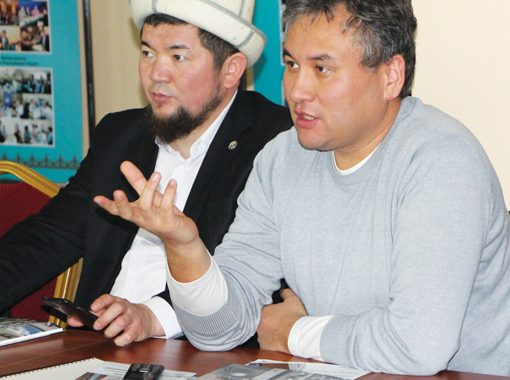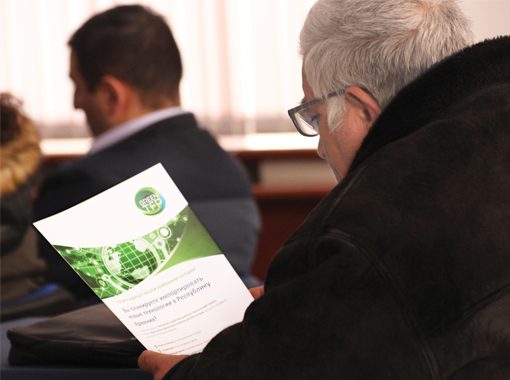
When we were told that over 100 companies had expressed an interest in attending our workshop in the Kyrgyz Republic, and that the Chamber of Commerce and Industry had to close registration because there weren’t enough seats in the conference room, we couldn’t quite believe it. No one had expected such interest!
This workshop – held in Bishkek in December 2016 – was part of our Green TFP pilot. Local companies came to learn how they could finance imports of energy or resource efficient technologies and materials.
What is the Green TFP?
The Green TFP is a new concept that contributes to the EBRD’s Green Economy Transition (GET) approach by stimulating the supply of high performance technologies and services into or across the EBRD’s countries of operations.
The EBRD launched the GET approach in 2015 to put investments that bring environmental benefits at the heart of its mandate.
Building on a decade of successful green investments, the GET approach seeks to increase the volume of green financing from an average of 24 per cent of the EBRD’s annual investments in the 10 years up to 2016, to 40 per cent by 2020.
Green TFP transactions in 2016

There are a number of technologies with significant potential environmental benefits, which are currently not deployed in the EBRD region or have a negligible market penetration.
And this is where the Green TFP comes in as it can support the introduction and use of higher performance technologies through supply chains, and including supply chain finance.
The concept of the Green TFP is very straightforward: by combining short-term trade finance instruments (supported by the TFP) with medium or long-term investment financing (for example, through the Green Economy Financing Facilities, GEFFs), both our partner banks and their clients win.
This combination will support the creation and development of supply chains and it is where we see a lot of potential for more trade in GET technologies and services.
In its first year, the Green TFP has supported 220 foreign trade transactions in GET technologies and services with a total volume of €198 million, across 14 countries in the EBRD region. This has resulted in annual energy savings of 339,750 MWh (the equivalent of double the yearly district heating demand of the city of Pristina in Kosovo); water savings of 26,300 m3 (the equivalent of the annual water supply to 550 people in Ukraine); and emission reductions of 181,600 tCO2 (the equivalent of removing more than 50,000 cars from the streets in Europe).
Because of the innovative nature of the Green TFP, the EBRD was named by Global Finance as one of The Innovators 2017 – Trade Finance

The creation of value chains for GET technologies and services is needed and the Green TFP is the solution for manufacturers and suppliers to penetrate the market.

Green TFP is particularly useful for financing smaller imports of high performance technologies and services into less advanced countries.
The Kyrgyz Republic is just the beginning
Since the Green TFP is implemented in partnership with the EBRD’s GEFFs, it benefits from the same tools developed under the new programme-level approach funded by the Austrian Federal Ministry of Finance. Thus the Green TFP’s implementation is supported by engineers, bank relationship managers, trade finance experts and marketing specialists.
They have already developed different marketing materials and other tools to be used by the issuing and confirming banks, and the importers and exporters of GET technologies and services. And it was these materials and the full Green TFP concept that we piloted in the Kyrgyz Republic.
Another pilot took place in Armenia in March 2017, and we are planning further pilots for the second half of 2017.
Different countries have different legal and regulatory environments which could affect the uptake of GET technologies and services. Therefore we need to test the concept in different markets so that it can be adjusted to meet varying needs.

